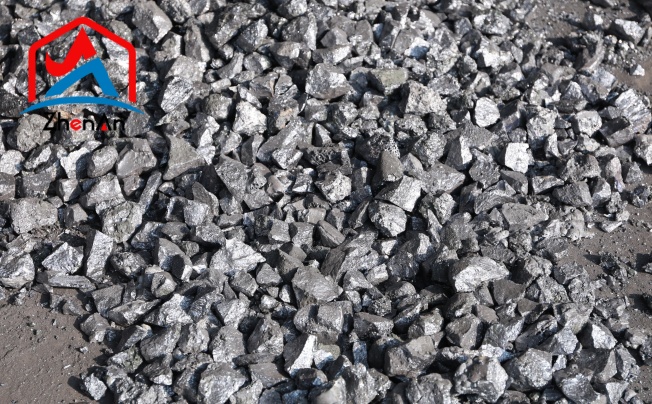Silicon plays a crucial role in the production of steel, serving as a key alloying element that imparts various desirable properties to the final product. In steelmaking, silicon is primarily used as a deoxidizing agent and to enhance the strength and hardness of the material. Its ability to improve the resistance of steel to oxidation and corrosion makes it an indispensable component in many industrial applications.
Negative Impact on Mechanical Properties
The negative impact of silicon on ductility and toughness directly influences the overall mechanical properties of steel products. Decreased ductility makes the material less capable of withstanding forming processes such as bending or stretching without cracking or tearing. This limitation restricts the potential applications of silicon-rich steel in industries requiring intricate shaping or manipulation during manufacturing.
Moreover, reduced toughness impairs the ability of steel components to absorb energy during dynamic loading scenarios, making them prone to sudden fractures or catastrophic failures even under moderate stresses. The compromised mechanical properties not only undermine the performance capabilities but also raise safety concerns in critical structural applications where failure could have severe consequences.
When silicon content in steel exceeds certain limits, typically around 0.2-0.3%, it can lead to embrittlement of the material. This phenomenon occurs due to the formation of silicate particles at grain boundaries, which act as stress concentrators, reducing the material's ability to deform plastically before fracture. As a result, the steel becomes more prone to sudden brittle failure under mechanical stress, compromising its structural integrity and safety.
Moreover, silicon-induced embrittlement becomes more pronounced at high temperatures. Elevated temperatures accelerate the diffusion of silicon atoms towards grain boundaries, promoting the growth of silicate phases that further embrittle the material.
This poses significant challenges in applications where steel components are exposed to elevated operating temperatures, such as in high-temperature boilers, pressure vessels, or turbine blades. The risk of sudden brittle failure under thermal loading underscores the importance of carefully controlling silicon levels in these critical components to ensure their mechanical reliability and longevity.
Weldability Challenges
The Influence of Silicon Content on Weldability
Silicon plays a crucial role in the weldability of steel due to its impact on the formation of various phases during welding. High silicon levels in steel can lead to the formation of brittle intermetallic compounds, such as Fe3Si and FeSiAl, which are detrimental to the welding process.
These compounds can cause cracking and reduced joint strength when subjected to thermal stresses during welding. As silicon content increases, the likelihood of these brittle phases forming also increases, posing significant challenges for welders.
Explanation of How High Silicon Levels Can Affect the Welding Process
During welding, high levels of silicon can result in a phenomenon known as hot cracking or solidification cracking. This occurs due to the low solubility of silicon in liquid iron, leading to segregation and brittleness along the grain boundaries.
The presence of silicon can also influence the solidification behavior of steel, causing changes in microstructure that affect weld integrity. Moreover, high silicon content can result in increased fluidity and surface tension during welding, making it challenging to achieve proper bead formation and penetration.
Impact on the Quality and Integrity of Welded Joints
The detrimental effects of high silicon content on weldability extend beyond the welding process itself and can have lasting consequences on the quality and integrity of welded joints. Cracking induced by excessive silicon levels not only compromises the structural strength of welds but also promotes premature failure under operational conditions.
In addition, areas affected by silicon-induced embrittlement may exhibit reduced ductility and toughness, making welded joints more susceptible to fracture even under relatively low-stress conditions. Thus, careful consideration must be given to controlling silicon content in steel to ensure reliable weld performance and joint integrity.
The Impact of Silicon on Steel
Effects of Silicon on Surface Finish and Machinability
High levels of silicon in steel can significantly impair the surface quality and machinability of the material. When silicon content is elevated, it can result in an increased tendency for surface imperfections such as roughness, pitting, and scaling. These surface irregularities not only compromise the aesthetics of the steel product but also affect its functional properties.
Moreover, the presence of silicon can lead to challenges in machining processes due to its abrasive nature. As a result, manufacturers face difficulties achieving precise dimensions and smooth finishes when working with high-silicon steel.
Discussion on How High Silicon Content Can Result in Poor Surface Quality and Machinability Issues
The adverse effects of high silicon content on surface quality and machinability stem from the inherent characteristics of silicon itself. Silicon has a strong affinity for oxygen, which can lead to the formation of oxides on the steel surface during production processes. These oxide layers not only detract from the visual appeal of the material but also create barriers that hinder machining operations.
Additionally, the presence of silicon particles in steel can cause tool wear during cutting operations, further exacerbating surface roughness issues. Manufacturers must carefully consider these factors when selecting steel grades for applications where superior surface finish and machinability are paramount.
Examples from Manufacturing Sectors Where This Poses a Significant Challenge
In industries such as automotive manufacturing and precision engineering, surface quality and machinability are critical factors that directly impact product performance and customer satisfaction. High-silicon steels pose a significant challenge in these sectors due to their propensity for poor surface finish and machining difficulties. For instance, automotive components requiring tight tolerances and flawless surfaces may face rejection rates or rework due to issues related to excessive silicon content in the steel used for their production.
Similarly, in precision engineering applications where intricate parts are machined with precision tools, high-silicon steels can lead to suboptimal outcomes that compromise overall product quality. As such, manufacturers must carefully balance silicon levels in steel formulations to ensure optimal performance across diverse industrial applications.
Impact On Electrical Resistivity
Silicon's Role in Altering Electrical Resistivity Properties
Silicon, while primarily known for its role in enhancing the strength and heat resistance of steel, also significantly influences its electrical properties. The incorporation of silicon in steel alters the material's electrical resistivity, affecting its conductivity and magnetic characteristics.
Silicon atoms introduce lattice distortions within the steel matrix, leading to changes in electron mobility and susceptibility to electrical currents.
How Varying Levels of Silicon Can Affect Conductivity or Resistivity Characteristics
The amount of silicon present in steel directly impacts its electrical resistivity. Higher silicon content increases resistance to the flow of electricity due to enhanced electron scattering at grain boundaries. Consequently, high-silicon steels exhibit higher resistivity compared to their low-silicon counterparts.
This property is essential in applications where controlled electrical conductivity is required, such as transformer cores and electromagnetic devices. Engineers must carefully consider the balance between mechanical strength and electrical performance when selecting silicon-containing steels for specific applications.






